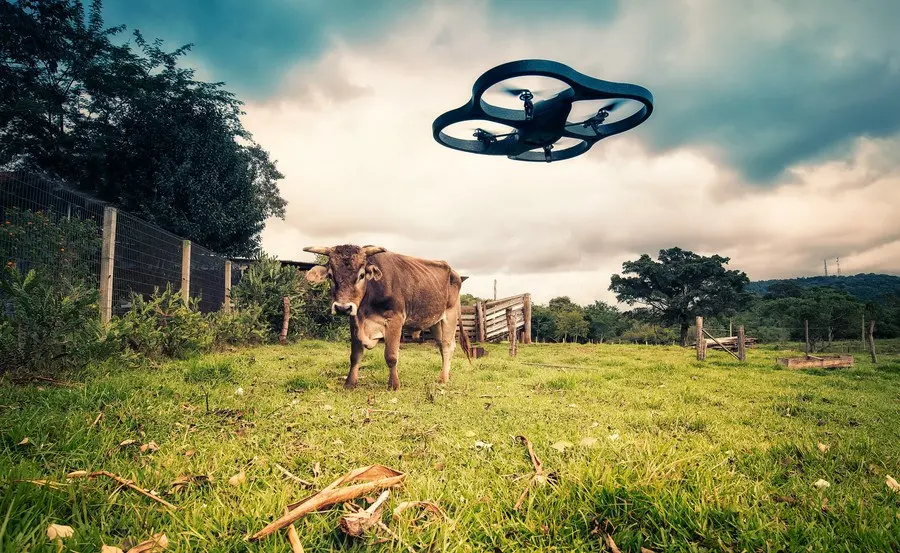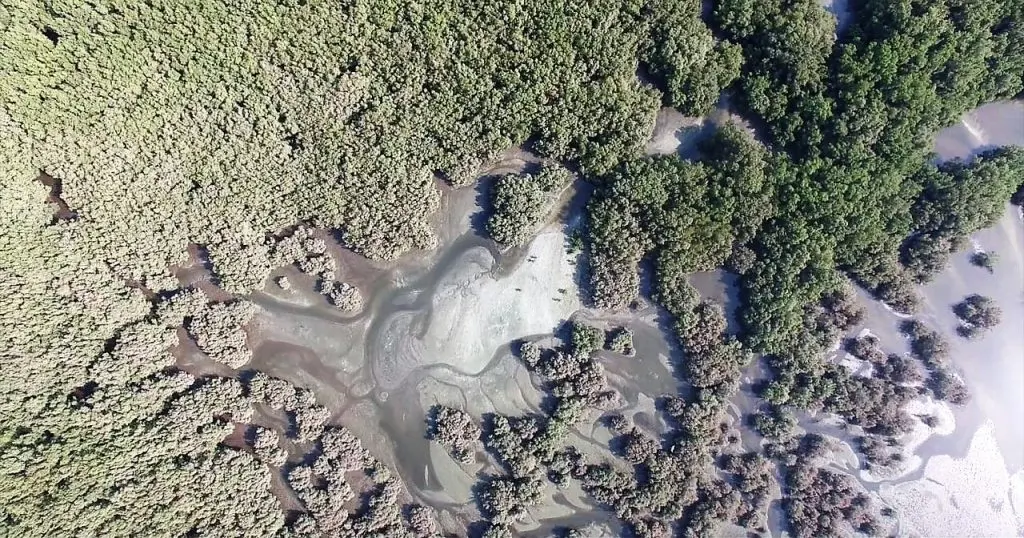Seems like Interstellar got it right – drones, self-driving vehicles, and other digital agritech solutions are the future of agriculture. Various technologies are gearing up to transform the world’s oldest industry into a hi-tech business with very few human interactions.
At this point, it’s hard to tell how soon exactly this is going to happen, but expect dramatic transformations already in 2020s. Just look at the up-and-coming solutions for drones and autonomous vehicles. The following technologies are about to change agricultural business as we know it:
- Drone field analysis;
- Crop scouting;
- Terrain 3D modelling;
- Autonomous drones;
- Self-driving tractors.

Current Drone Agritech Solutions: Agricultural Intelligence
Drones already bring great value to agricultural producers around the globe. Several vendors offer drone mapping software and other components that facilitate crop management and increase productivity of the farms. [Hint: N-iX, an Eastern European software development company, creates various agritech solutions].
Let’s see how exactly this technology helps farmers produce more food with fewer resources.
01: Normalized Difference Vegetation Index
Drone field analysis takes multiple forms. For instance, drones help to collect and analyze the Normalized Difference Vegetation Index (NDVI).
NDVI analysis has been in agriculture for several years. The index assesses crops by scanning them in the near-infrared. On the technical side, it works as follows:
- Crops live thanks to photosynthesis. During that process, plants absorb a lot of sunlight.
- Leaf cells emit some of that radiation back, which you can notice when viewing plants in near-infrared spectrum.
- Live plants emit a lot of solar radiation. Thus, healthy crops look brighter on the images.
Long story short, NDVI helps farmers assess the condition of the crops and act if their vegetative health is not satisfactory. In the past, farmers had to process satellite images of the terrain provided by the European Space Agency.

Still, drone mapping software allows a much more detailed, close-up look. Sensors scan the plants with unmatched precision and isolate crop regions that require extra attention. N-iX is ready to develop NDVI custom applications as well as other drone mapping software, just drop a line to our experts to learn how we can help.
02: Crop Scouting
Crop scouting is another major domain for drones in agriculture. The technique detects pests and fungi and allows putting together comprehensive treatment plans early on.
Most of the crops in the Northern hemisphere grow in stressful environments. The soil is commonly too moist or too dry, while the temperatures are substantially lower than the optimal conditions. These factors result in a depressed health of the crops and their high exposure to parasites.
Drones can spot problems early on and allow farmers to act to increase yields. Fundamentally, crop scouting works much like the NDVI analysis, it just uses a different light spectrum. It is easy to deploy crop scouting hardware and NDVI sensors on the same drone. This helps to get a comprehensive overview of the crops in a single field flyover.
DroneUA is one of the leading companies in Eastern Europe that create agritech solutions for crop scouting.
03: Drone Mapping Software
One of the cooler features of agricultural drones is accurate 3D modelling of the terrain. To be fair, it is not purely an agritech speciality, as various vendors supply software that produces detailed 3D models. Some companies have gone as far as making exhaustive models of larger rural areas and even entire cities. Pix4D is one of the leading vendors in that domain.

Topographic 3D modelling is particularly useful in agriculture. Elevations, water streams, and other terrain characteristics dictate how to sow the seeds and handle the resulting crops. A detailed scheme of the field allows farmers to mark their lands better and, ultimately, harvest larger yields.
Future Agritech Solutions: Autonomous Drones and Vehicles
Autonomous harvesters, tractors, drones, and other robots are not a distant future. This machinery is just around the corner: the technology is already there. The market is just waiting for some great designs and for the money to flow in. Let’s dive into the future with some of the emerging robotics technologies.
04: Autonomous Drones
Larger autonomous drones can boost field productivity and decrease the loss of plants. There are at least three applications where autonomous drones can bring great value:
- Better plant irrigation. Autonomous drones can water certain crops in a more natural way, i.e. from the sky. The amount of moist supplied to each area can vary according to data collected by sensors and machinery determining soil moisture levels. The drones can dose the supply: deliver more water to the yields that require heavier irrigation and less water to healthier crops.
- Accurate delivery of fertilizers. Much like irrigation, drones can deliver precise plant prescriptions. For example, if certain areas require more nitrogen according to the vegetative health assessment, drones can deliver prescriptions only to those risky yields. The crops that are better off without extra agents do not receive excessive fertilizers.
- Precise pesticide doses. Drones can spray pesticides to the crops that suffer from pests and omit healthy yields at the same time.

05: Self-driving Vehicles
Self-driving tractors can plant seeds with laser-sharp precision. GPS navigation allows sowing seeds to the designated locations. With current technology, the deviations are already as small as a few centimeters. Quite possibly, these deviations can be eliminated completely as technology evolves.
Autonomous harvesters can reap crops more efficiently than the human operators. A combination of GPS navigation, multiple sensors and precise processing mechanisms make sure the harvester accurately collects all the yields. The technology also allows to decrease the stress and damage suffered by the plants in the process. In turn, this translates into better field productivity for the coming years.
The Afterword
Now, imagine these and other digital technologies combined into a single IoT network. Drones, harvesters, tractors, sensors, and other machinery connected and interacting in real-time. The future farm might look like this:
- Autonomous drones fly over a huge farm and scan the state of the land. This data helps to determine which crops should be grown at particular locations.
- The data is transferred wirelessly to a processing center in real time. A cloud-based AI-enabled super-computer analyses the input from the drones and compares it to the statistics from the previous periods. It then marks the field in a fashion that optimizes future yields and all calculations happen in a matter of minutes.
- Even before the drones are back to their stations, a horde of self-driving tractors marches to the fields sowing the seeds with incredible precision.
- In the coming weeks drones make daily flights to monitor the condition of the future crops. When needed, larger drones take over providing proper precipitation, fertilizer prescriptions, and pesticides to the plants.
- When crops ripe, autonomous harvesters gently crop the yields with little damage done to the land and the plants.
- The whole scenario is happening without human interactions.
Does it sounds too far-fetched? Maybe. But given the currently available agritech solutions, completely autonomous farms are a matter of a few decades. Let’s just hope the rest of the Interstellar screenplay does not come true.



